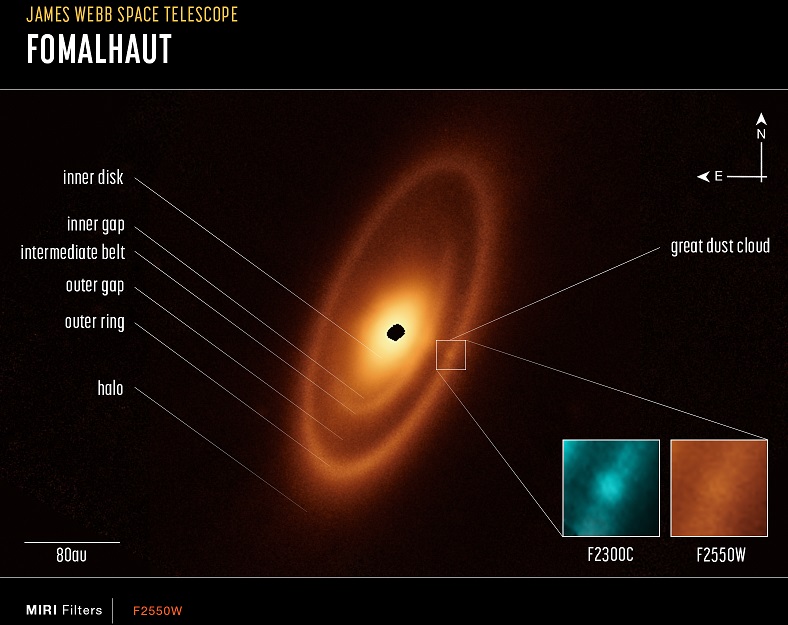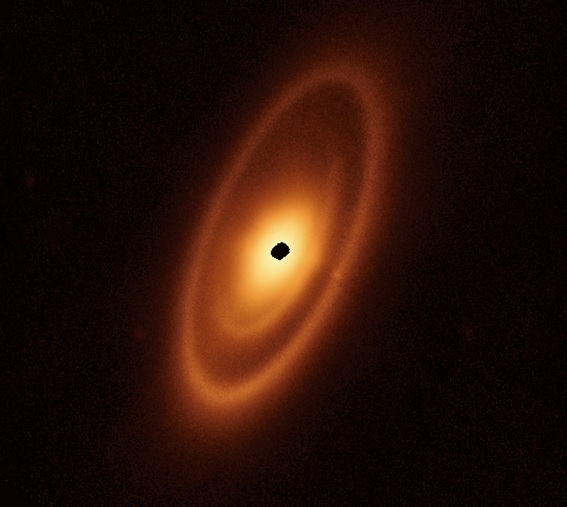A new Webb Space Telescope image of the bright, nearby star Fomalhaut reveals its planetary system with details never seen before, including nested c
A new Webb Space Telescope image of the bright, nearby star Fomalhaut reveals its planetary system with details never seen before, including nested concentric rings of dust. These belts most likely are carved by the gravitational forces produced by embedded, unseen planets, reports NASA.

Similarly, inside our solar system Jupiter corrals the asteroid belt of leftover debris that lies between us and the giant planet. Astronomers first discovered Fomalhaut’s disk in 1983. But there has never been a view as spectacular –or as revealing– as Webb’s.

Astronomers used NASA’s James Webb Space Telescope to image the warm dust around a nearby young star, Fomalhaut, in order to study the first asteroid belt ever seen outside of our solar system in infrared light. But to their surprise, the dusty structures are much more complex than the asteroid and Kuiper dust belts of our solar system, reports NASA.
Overall, there are three nested belts extending out to 14 billion miles (23 billion kilometers) from the star; that’s 150 times the distance of Earth from the Sun. The scale of the outermost belt is roughly twice the scale of our solar system’s Kuiper Belt of small bodies and cold dust beyond Neptune. The inner belts –which had never been seen before– were revealed by Webb for the first time, reports NASA.

The young hot star, can be seen with the naked eye as the brightest star in the southern constellation Piscis Austrinus. The dusty belts are the debris from collisions of larger bodies, analogous to asteroids and comets, and are frequently described as ‘debris disks.’
“I would describe Fomalhaut as the archetype of debris disks found elsewhere in our galaxy, because it has components similar to those we have in our own planetary system,” said András Gáspár of the University of Arizona in Tucson and lead author of a new paper describing these results. “By looking at the patterns in these rings, we can actually start to make a little sketch of what a planetary system ought to look like — if we could actually take a deep enough picture to see the suspected planets”, as reported by NASA.

None of the telescopes that had aimed at Fomalhaut befre had found any structure interior to the outer belt. The inner belts have been resolved for the first time by Webb in infrared light. “Where Webb really excels is that we’re able to physically resolve the thermal glow from dust in those inner regions. So you can see inner belts that we could never see before,” said Schuyler Wolff, another member of the team at the University of Arizona.
All Credit: NASA, ESA, STScI MEDIA CONTACT: Ray Villard, Space Telescope Science Institute, Baltimore, Maryland. Christine Pulliam, Space Telescope Science Institute, Baltimore, Maryland


